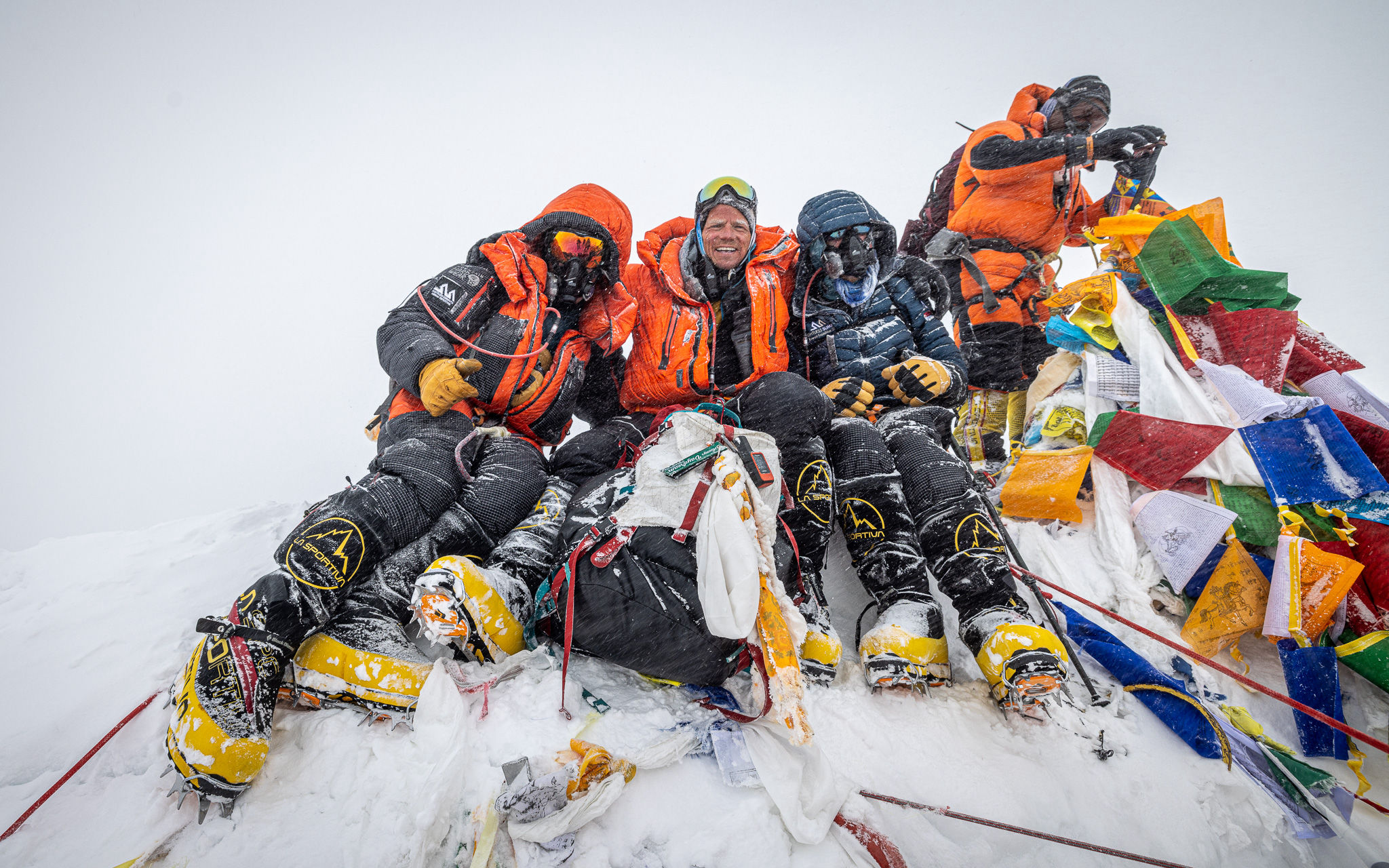
The Sightless Summits team takes on Everest and Lhotse

The Sightless Summits team takes on Everest and Lhotse
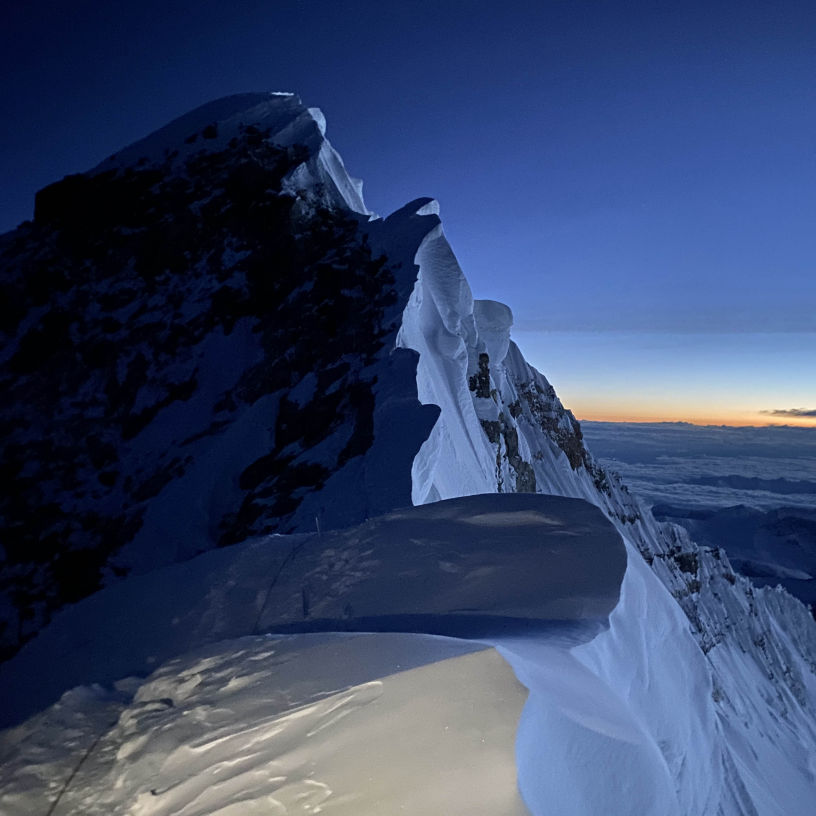
From Lukla, the full Sightless Summits team (Lonnie, Michael and Bryan) will trek to Everest Base Camp and then on to its summit. If successful, Lonnie will be the fourth blind person to summit Everest!
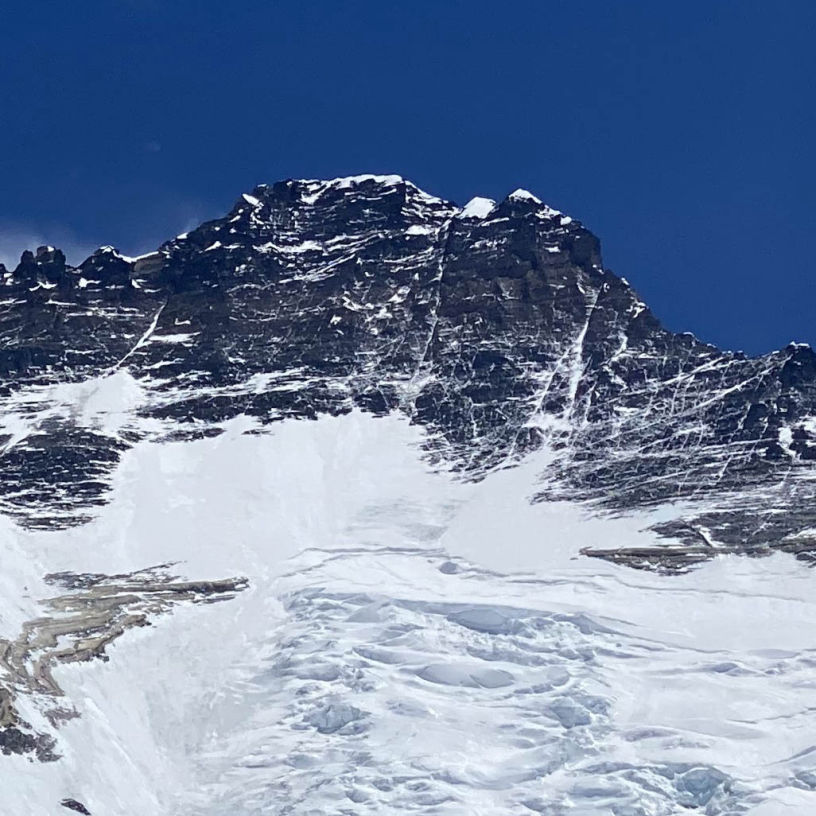
After a successful Everest summit, the team will be poised to climb the last portion of the world's fourth tallest mountain. If successful, Lonnie will be the first blind person to climb both mountains. What an accomplishment!
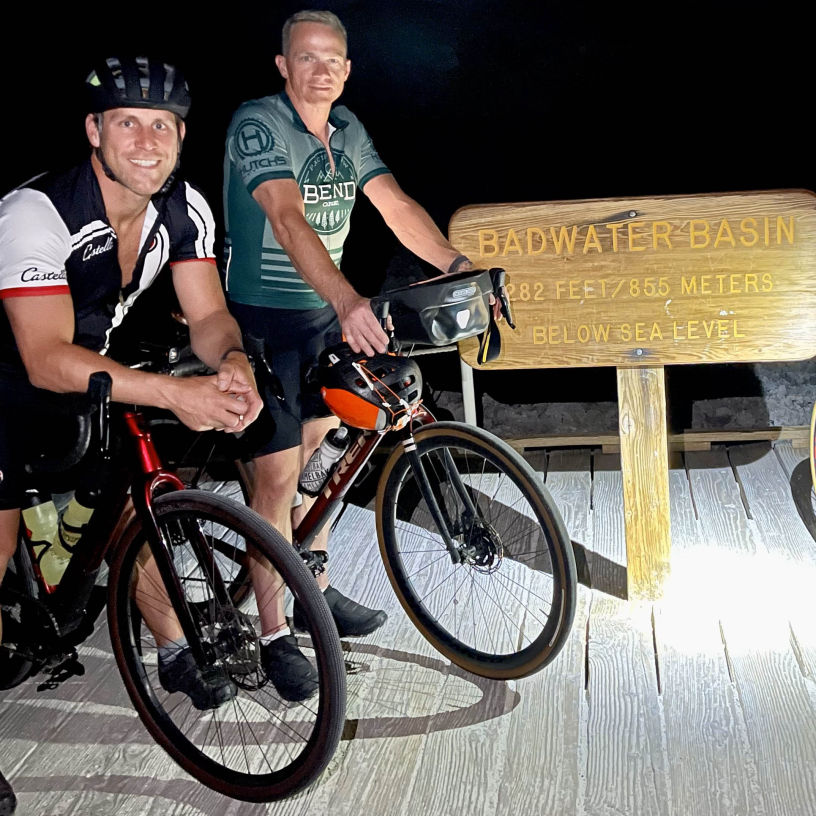
Michael Neal and Bryan Hill ride from the Indian Ocean to the high altitude village of Lukla, Nepal where they'll meet the rest of the team. If all goes well, the pair will set a world record for the Fastest Known Time from sea level to the summit of Mt. Everest. Fingers crossed!

Hello everyone - I’m back at camp 2 and leaving for base camp in about 6 hours. Fly to Kathmandu on the 26th and will try to get back to the states as soon as I can. Last few days have been tough. I sincerely appreciate everyone’s texts and positive messages. They really help!

Summited Lhotse at 9:30am. All the new snow made it very hard. Heading down now. Garmin inreach shut down, because it was too cold. -Michael

Woke up to heavy snow fall. Accumulation is about 12”. Sherpa guide is doubtful that we can go up and wants to wait an hour or two to see how things look.

Bryan and Lonnie are walking back down to Camp 2. Bryan is dealing with some frost bite and Lonnie is extremely exhausted. I am at Lhotse high camp and will be leaving at 11pm for Lhotse summit. Someone used 2 of our O2 bottles. They’re asking me to climb with short supply- not sure I can. The air is so thin here that once you’re using oxygen, it’s hard to stop. Five hours to rest then I’ll see what I can do - Michael

Summit at 4pm. Hard day. Lonnie is having a tough time. Headed down now. Snowing hard and getting late.
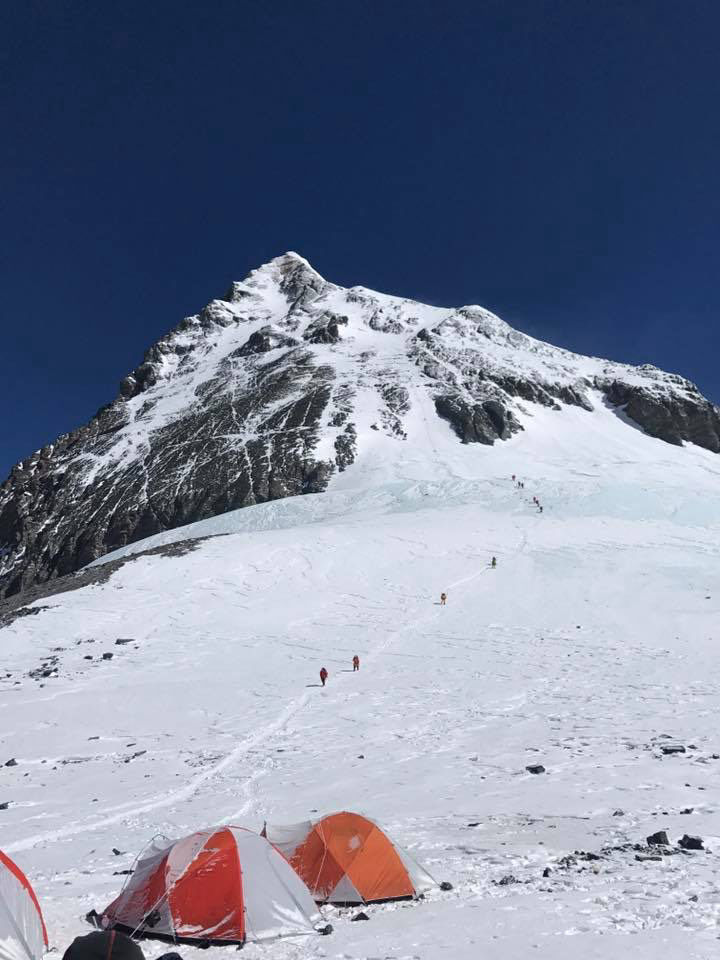
Reached camp 4 tonight. Should have taken 6-8 hours, but it took us 12. Yesterdays comment about struggles was related to O2, moving slow etc. Not sure of Plan- Lonnie needs rest, but there’s not a lot we can do at 26,000 ft. We’ll need to move and fight through. Leaving at midnight for summit- only 3 hours away. We will be fine- if it was easy, everyone would do it!! Very windy, snowy and cold right now, but the forecast says it’ll get better. Go team!!
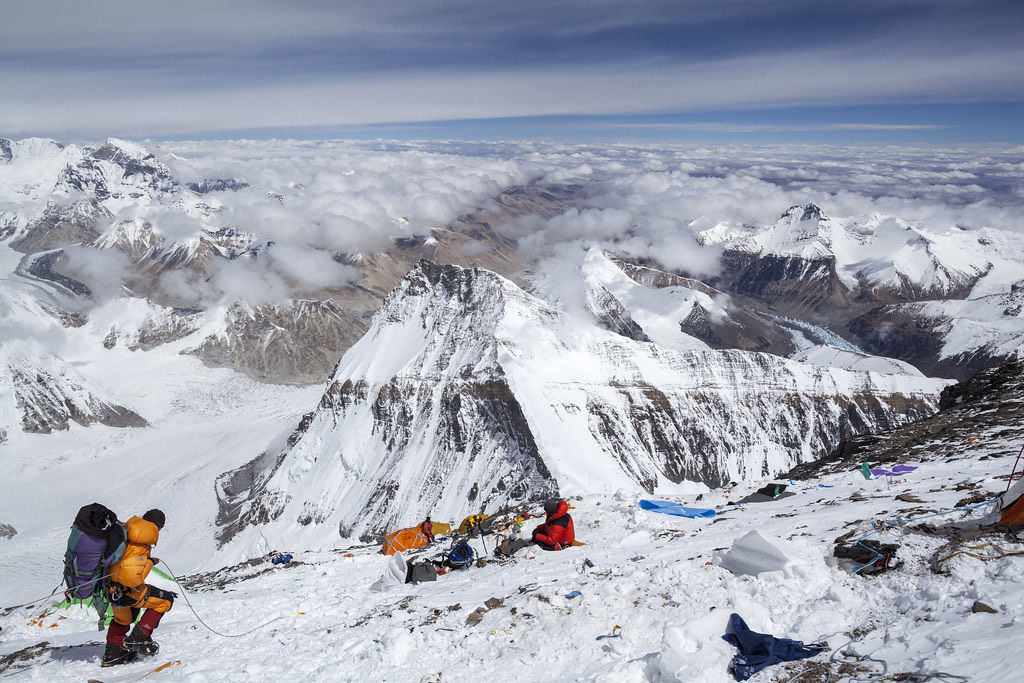
Made it to camp 3 last night. We’re walking to camp 4 tomorrow.
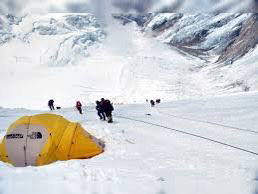
Weather Delay at Camp 2, but moving soon!
The Sightless Summits team made it to Camp 2 and spent our rest day as planned. Not planned was the new (short term) weather issue. A storm in the Bay of Bengal is temporarily creating high winds along the Himalayas. With only hours before our intended departure, we decided to hold off one day. The weather here in Camp 2 is beautiful and we’re taking advantage of the extra rest day to perform final checks on gear and clothing. If all goes well, we’ll be in Camp 3 tomorrow late morning (May 20th) ready to launch higher. The team is healthy and happy - but ready to move forward.
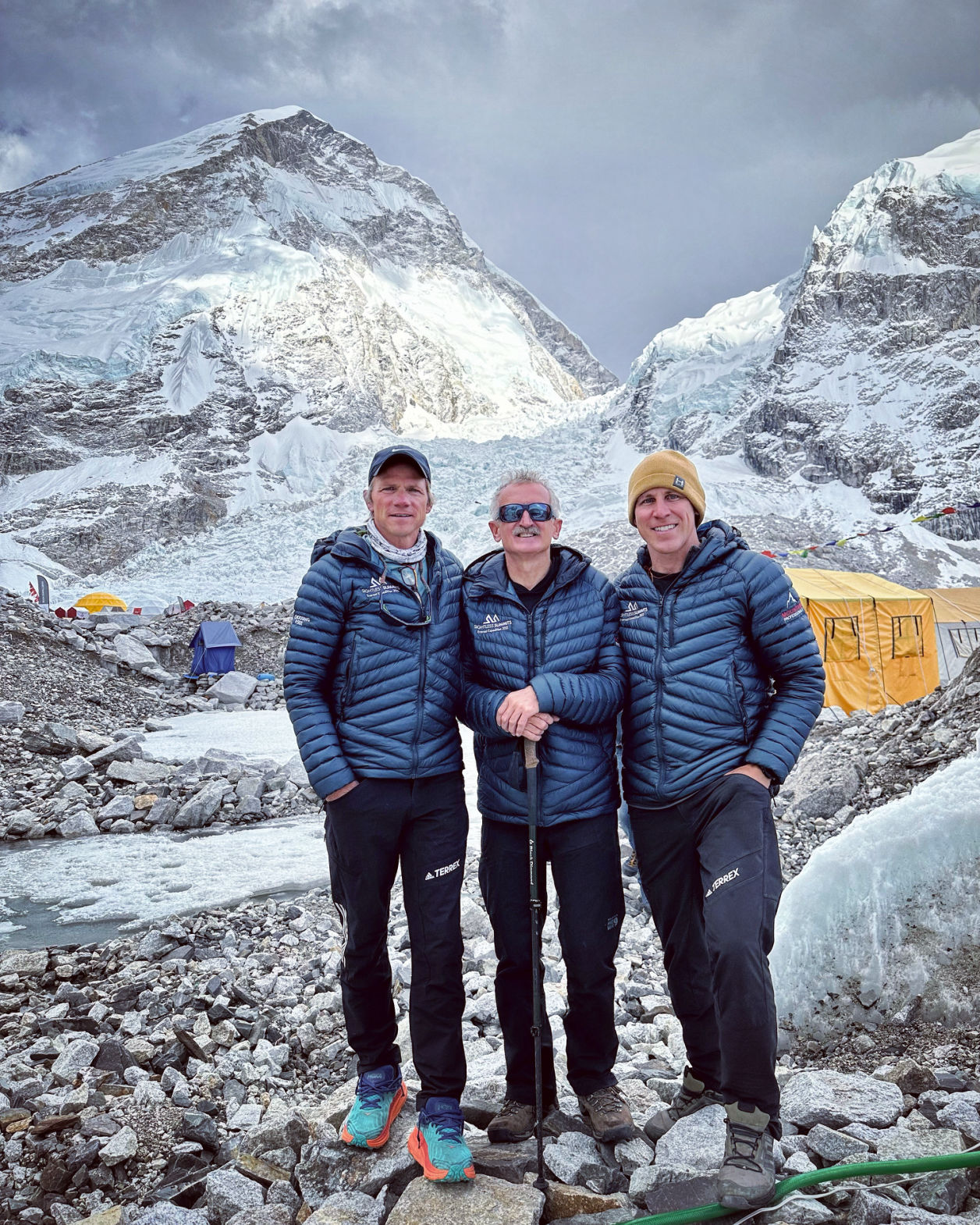
The team woke up this morning at 2am to start our first rotation up the mountain. Today we will move through the khumbu icefall up to camp 1. Then tomorrow we will move to camp 2 and sleep there for 2 nights and then the next day go to touch camp 3 and come back down to sleep at camp 2 for a night or so. Afterwards we return back to base camp. We will be gone for about 5-6 days for this rotation. After this we will be acclimated and ready for a summit attempt! Will check back in next week!
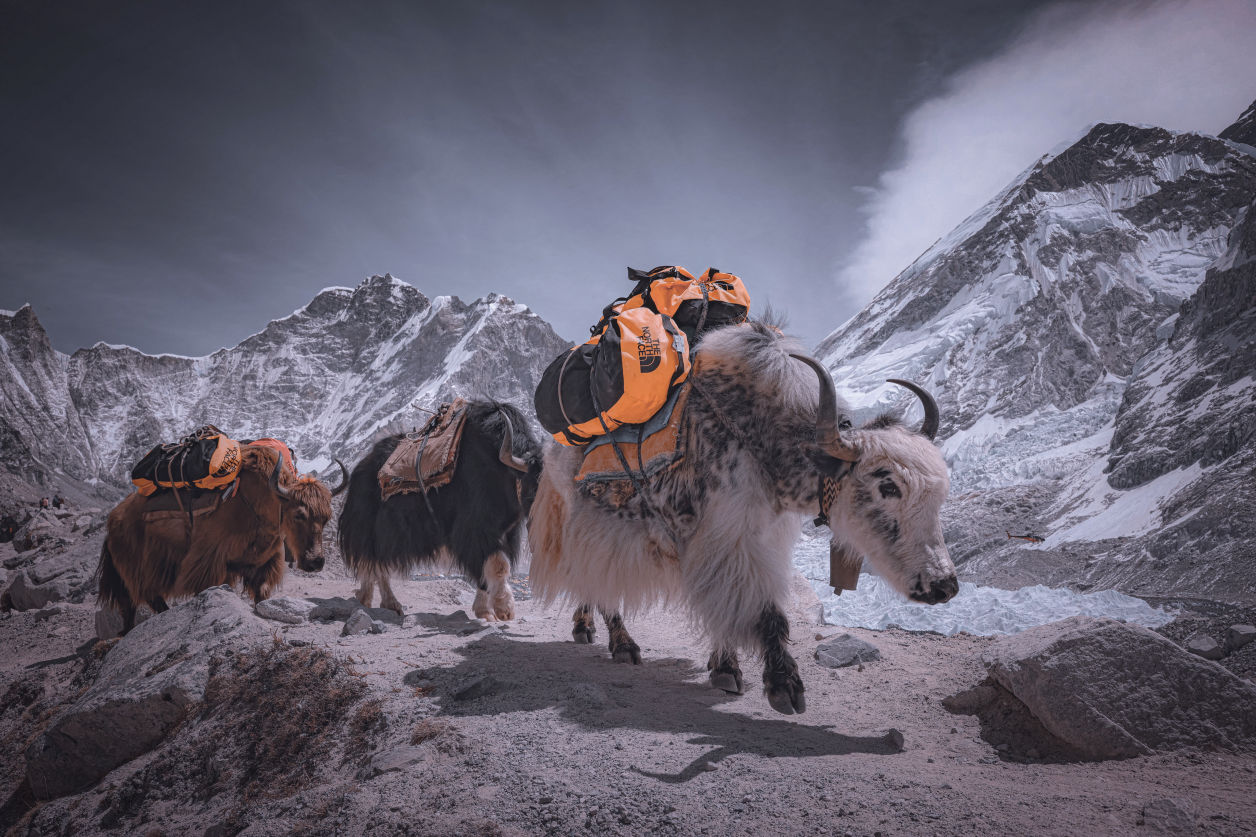
It has been 6 days since returning from our 2nd rotation. Our progress at this point is in the hands of the Imagine Nepal route fixing team and weather. Typically this time of year the monsoons moving through the Bay of Bengal reach land in India and push the jet stream higher, opening up a window for teams to climb to the Everest summit. This has yet to occur this year. At this point we continue to watch the winds rip across Nuptse and the west shoulder of Everest from base camp as we drink our morning coffees. Some speculate that the route might not open until May 9th while others guess it could be as late as the 14th. So, for now, we wait. We sit at base camp, play board games, eat like kings and wait for the green light to push up the mountain.
Everest Base Camp has become a second home to us. The Mountain Professionals team has thought through all aspects of our stay. They have an Espresso machine, a large dome tent with bean bag chairs to rest in, hot showers, Wifi, professional cooking staff, etc. The mountaineers of previous generations would be flabbergasted by the luxuries that we experience today in base camp. While our stay has been comfortable it has not been without a few certain annoyances, namely, drones. There are not many hours in the day that pass without the high pitched buzzing of a flying robot outside of our window. This is surely fun for the operator, however annoying to the hundreds of people that have to put up with the noise. There are strict regulations on the use of drones in Sagarmatha National Park but it’s obvious that several people have foregone the registration process and proceeded with their drone activities as they like. The team often sits inside the dining tent devising plans to get rid of the flying machines but no drone casualties have occurred to date. We will report on this in future updates.
Base camp sits at the terminus of the Khumbu valley and is surrounded by towering peaks. Lingtren to the north, Pumori to the northwest, the west shoulder of Everest to the east and Nuptse to the South. While the views are breathtaking, one has to realize that we are placed in the middle of a valley that is susceptible to avalanches. Not a night goes by that the stillness is not interrupted by a sound that I can only liken to a detonating bomb. These explosions, thousands of feet above our tent, tend to go 1 of 2 ways. The initial release will either propagate further explosions and the slide will build in strength as it races down the side of mountain. Or, in some cases, the initial sound starts a slide that quickly dissipates and you can rest assured that your space will not be threatened. When this happens you lay in the darkness of your tent trying to pinpoint which peak the avalanche has released from and whether or not you should do something, as if there is anything that you could really do. The likelihood that the avalanche will threaten camp is low but stories of 2015 will always play in the back of your mind when you hear the initial release in the night.
Lonnie has been dealing with the “Khumbu Cough” which is an annoying upper respiratory pathology that, per the doctor, is the most diagnosed occurrence amongst climbers. He has been taking cough suppressant and using an inhaler which has helped but the cough still lingers. In an attempt to address this cough, Lonnie and Michael decided to catch a helicopter down to the town of Namche Bazaar for a few days prior to our summit attempt. Lonnie reports that since arriving in Namche his cough does seem to be improving.
Once the weather has cleared for us to make a summit push this will be our intended schedule. (*lonnie will leave 1 day early to split up the first day)
Day 1: EBC to camp 2
Day 2: Rest at camp 2
Day 3: Move from camp 2 to camp 3
Day 4: Move to camp 4
Day 5: Everest Summit Attempt / Return to camp 4
Day 6: Move to Lhotse high camp
Day 7: Summit Lhotse / Return to Lhotse high camp
Day 8: Descend to camp 2
Day 9: Return to Everest Base Camp
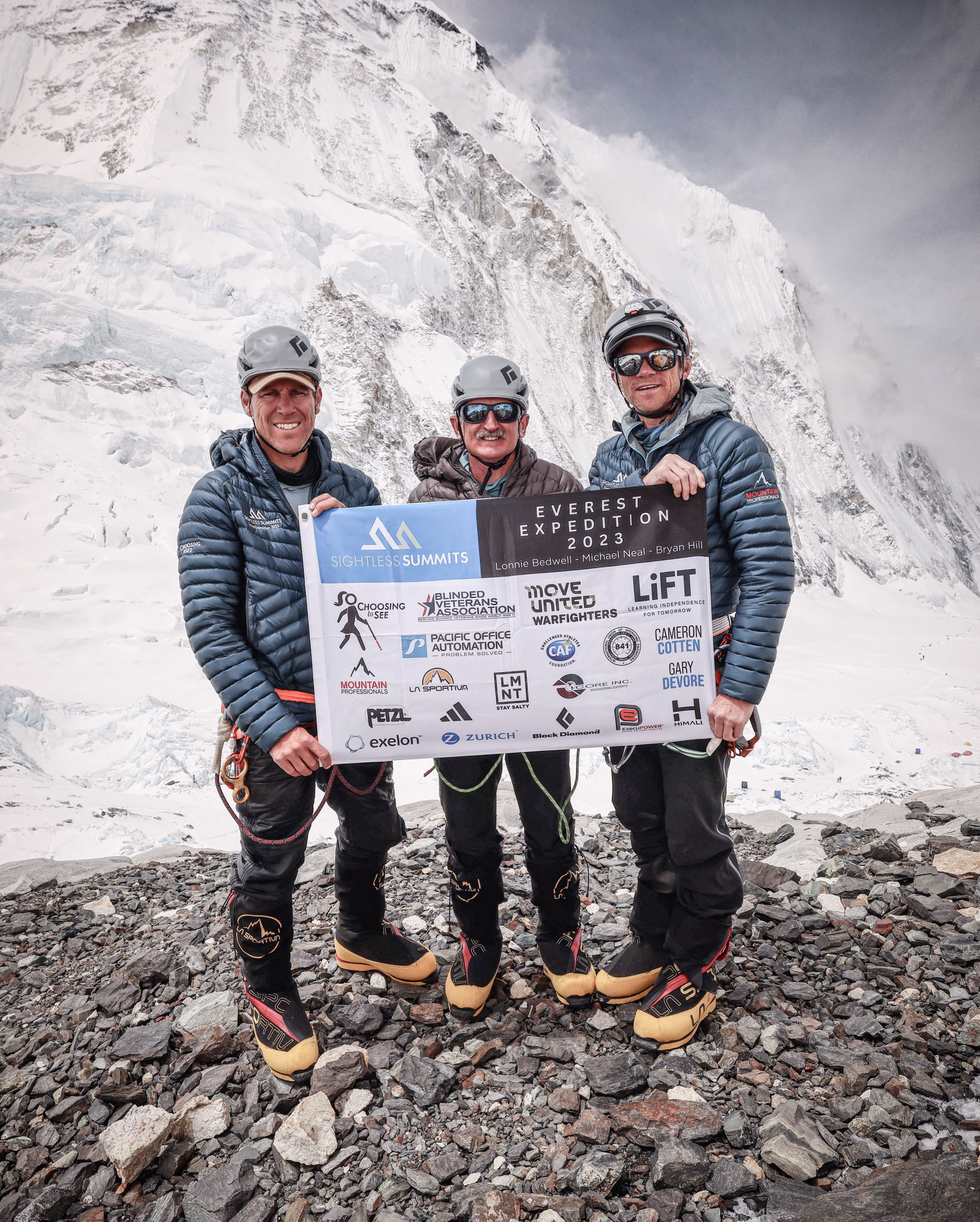
We have completed our 2nd and final rotation! We left 6 days ago from base camp and slowly worked our way up to touch camp 3 at 23,150 feet. The rotation started on April 27 and we started by walking through the notoriously dangerous Khumbu Icefall. This section from base camp, through the icefall and finally to camp 1 took us about 12 hours.
The icefall is littered with deep crevasses and towering seracs of ice that could fall at any time. The question in your mind is, “Will I be standing there when it does decide to go?” There are certain sections of the icefall where we were told, “move fast”… These areas are prone to falling seracs especially as temperatures warm later in the day. Needless to say, there was a certain level of anxiety that we all felt that day as we worked our way up to camp 1.
The icefall has been said to move about 3 feet each day. We noticed that this was true as our descent back to base camp was much different than our ascent from 5 days prior. If you are interested I would suggest going on YouTube and searching “Khumbu icefall Timelapse”. The video shows the icefall moving almost as a waterfall over the course of 2 years.
On April 28 we woke up to a crisp morning and were offered spectacular views of the Lhotse face. Our first views of the Lhotse face were somewhat intimidating due to its sheer magnitude and steepness. Fortunately the task at hand for the day was much less difficult than the preceding day. We only had to walk about 4.5 miles, gaining around 1500 feet, on a relatively consistent surface all the way to camp 2. At this point we had entered the western cwm and the temperature felt as if it was blazing. There was relatively little wind and we were baking in the sun which felt weird seeing as how we were above 20,000 feet.
The 29th was spent as a rest day at camp 2. The team consistently says, “are we seriously eating again?!” It feels as if all we do on rest days is eat, sit around for a while and all of a sudden it’s time to eat again. Camp 2 was much more developed than camp 1. We had a designated cook and dining tent which was actually heated with a propane stove.
Our alarms went off at 4:15am on the 30th and we set out to camp 3. The first 2 hours of this day were mellow up until we reached the Lhotse face. At this point the real climbing began. We gained the Lhotse face by way of a few sporty moves over the bergschrund. From here it was a steep icy slope up to camp 3. Our climbing has now turned into taking 5-10 steps, stopping for a short break and then continuing for another 5-10 step interval. Progress was slow, but each step took us one step closer to camp 3.
Half way up the slope someone yelled, “rocks!!” Everyone assumed a tucked position as the rockfall from the upper mountain screamed past us like missiles. After the rockfall had passed Lonnie told us that he had been hit. The toe box of his 8000 meter boot had been completely inverted by one of the rocks. Fortunately it was just a cosmetic issue of the boot and his foot was spared any structural damage.
After about 4 hours of steep climbing we all reached camp 3! Lonnie was extremely tired from the altitude and muscular demand of the Lhotse face. It was apparent that we needed to descend quickly. Fortunately, Lonnie is fluent at rappelling and he was able to quickly descend the 8 sections back to the base of the Lhotse face.
That night we enjoyed a warm meal at camp 2 and then quickly retreated to our tents for some much needed rest. Although we had touched 23,000 feet most of us still had trouble sleeping at camp 2. Our “sleeping” consisted of laying in the tent for hours reading a book, or watching a movie, hoping that our eyes would close and we would wake up not knowing what happened.
Our 4:15 a.m. alarm came early on May 1st. We were so tired from climbing the Lhotse face on the previous day and the last thing we wanted to do was get up and walk. I guess you don’t always get what you want. We met in the dining tent, ate some food and then set out for our return to base camp. After 1.5 hours of walking we had reached camp 1. We had walked through a complete whiteout which made it difficult to see crevasse openings. The reality that each footstep could give way to a deep crevasse played in the back of our minds.
From camp 1 we had to descend back through the Icefall to reach base camp. We moved much faster going this direction. Instead of suffering up 40 foot head walls we enjoyed a fast rappel to their base. Gravity was finally on our side. Although finding foot placements in the mixed up icefall terrain was difficult for Lonnie we were still able to descend the entire icefall in 6 hours as opposed to 12 on the way up.
After 7.5 hours we had finally reached base camp! We were tired and hungry but our goal had been achieved. We are now acclimated to 23,000 feet and resting up for our final summit push which should happen sometime in the next 2 weeks after we rest and wait for an appropriate weather window.
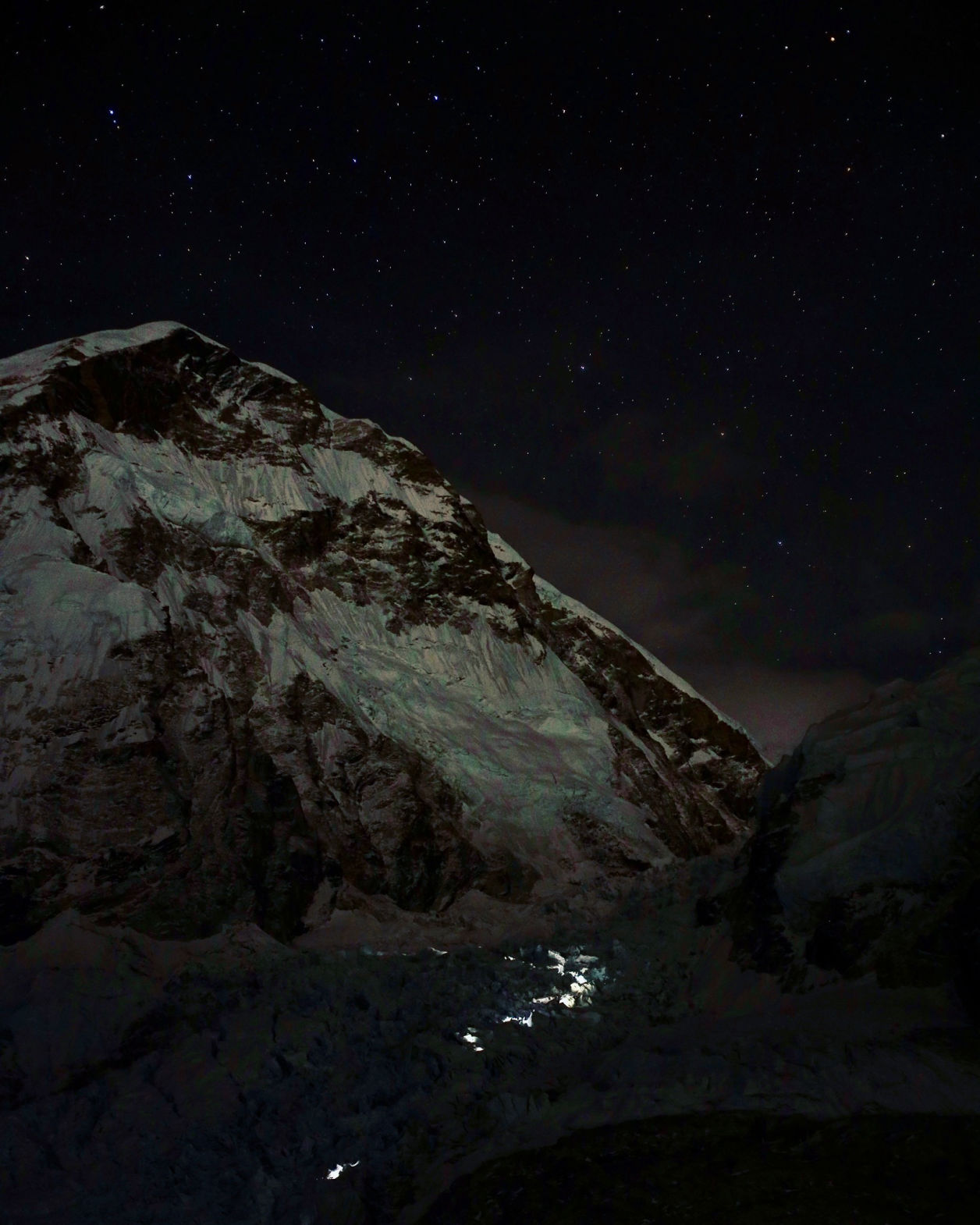
The team woke up this morning at 2am to start our first rotation up the mountain. Today we will move through the khumbu icefall up to camp 1. Then tomorrow we will move to camp 2 and sleep there for 2 nights and then the next day go to touch camp 3 and come back down to sleep at camp 2 for a night or so. Afterwards we return back to base camp. We will be gone for about 5-6 days for this rotation. After this we will be acclimated and ready for a summit attempt! Will check back in next week!
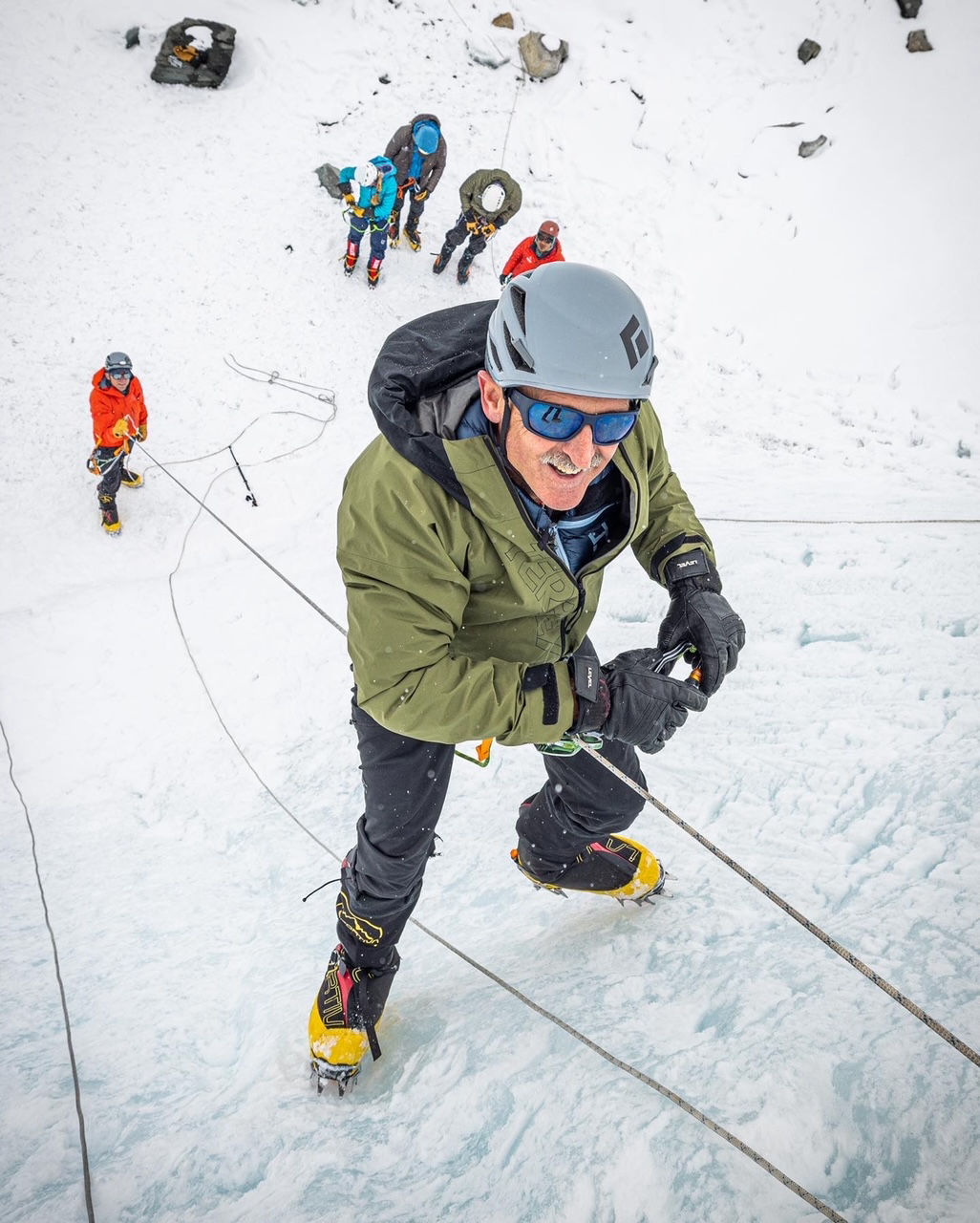
Today we spent some time in the lower part of the icefall preparing for some of the obstacles we will face between Everest base camp and camp 1. We worked on ladder crossings, ascending ropes, rappelling and passing anchors. If the weather cooperates we should be moving up the mountain in the next 3 days or so.
During this coming rotation up the mountain we will likely move to camp 1 and sleep for one night. The next day we will move to camp 2 and sleep for a few nights. Following this we will hike up and touch camp 3 and then make our way back to camp 2 to sleep for another night or 2. Then we will return to base camp. After this rotation we will be primed and ready to attempt an Everest Summit.
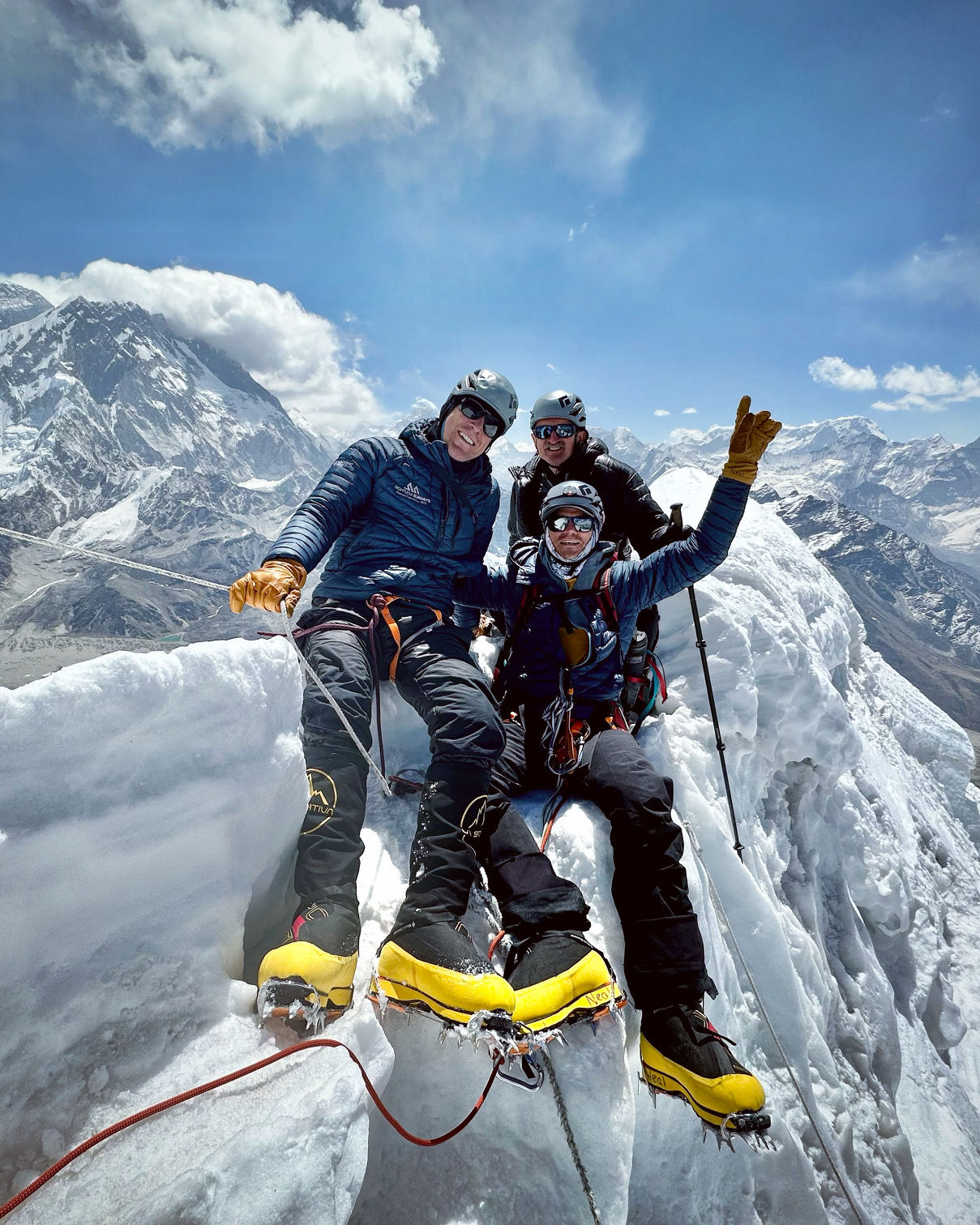
Over the past few days our team left the comfort of Everest base camp and walked about 6 miles back to a mountain called Lobuche. Teams climbing Everest will usually do 2 rotations up Mount Everest to acclimate and then do a summit attempt. We decided to do one of our rotations on Lobuche and then one on Mount Everest to camp 3 for a few reasons. For one, limiting your trips through the khumbu icefall can greatly reduce your risk of injury and second it is a nice way to break up the trip and experience other parts of the valley.
On April 20th around 1am our alarm clocks went off and we started gearing up for the climb. The distance to the summit was short but the challenge was the 3,200 feet of elevation we had to gain at such a high altitude. Lonnie was able to navigate the terrain well with the guidance of Tashi and Fenjo, our local Nepali climbing sherpas. We reached the summit after about 6.5 hours of climbing and were fortunate to have beautiful weather and the summit to ourselves.
Typically Lonnie is able to descend a mountain pretty quickly. This was not the case on this mountain. The glacier was made up of inconsistent, jagged and icy steps that challenged Lonnie to a great degree. We resorted to having Lonnie rappel much of the upper glacier for safety reasons. Our descent back to camp took about 5 hours. We were greeted with hot tea and soup back at vase canoe but unfortunately we knew that this was just a short resting point because we still had another 2.5 hour descent to get to the tea house in the town of Lobuche.
We have now returned to Everest Base Camp and we will rest here for a few days. Our next climb will take us all the way up to camp 3 on Mount Everest. After this we are in position to summit!
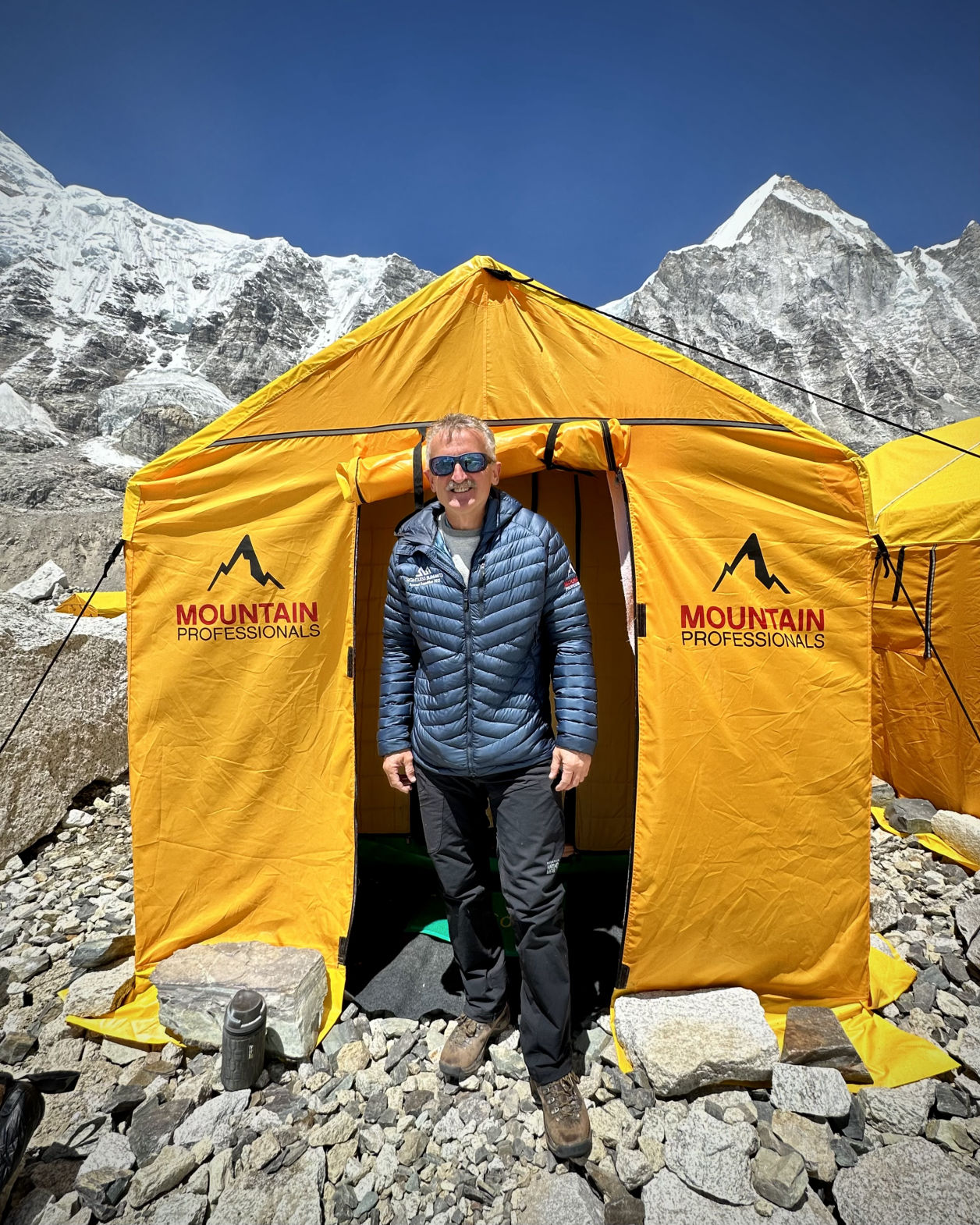
We have had a few days of rest and are now ready to move into our first rotation. We are leaving base camp today and heading to climb Lobuche. This will take us about 3 days and we will be able to get up to 20,000 feet. Photos and updates to come in a few days!
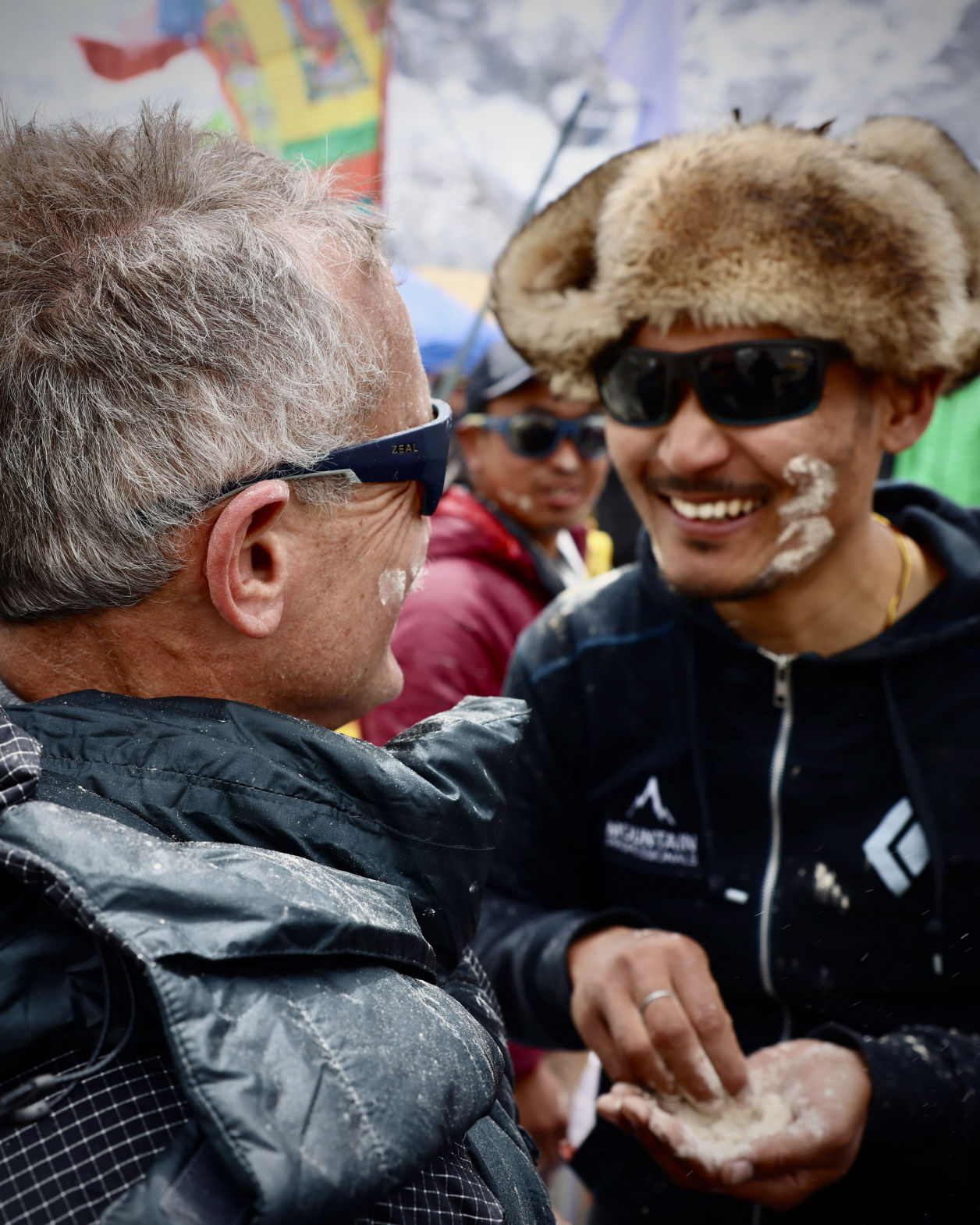
Everest Base Camp / Puja ceremony
We had our final puja ceremony today led by Lama Pasang Temba Sherpa. Our climbing gear was placed on the stupa and it was offered up to ask for safe passage into the mountains. The trekkers will all leave tomorrow and the climbing team will begin training on ladders to prepare for crossing the icefall. Lonnie is in high spirits and feeling good about our progress
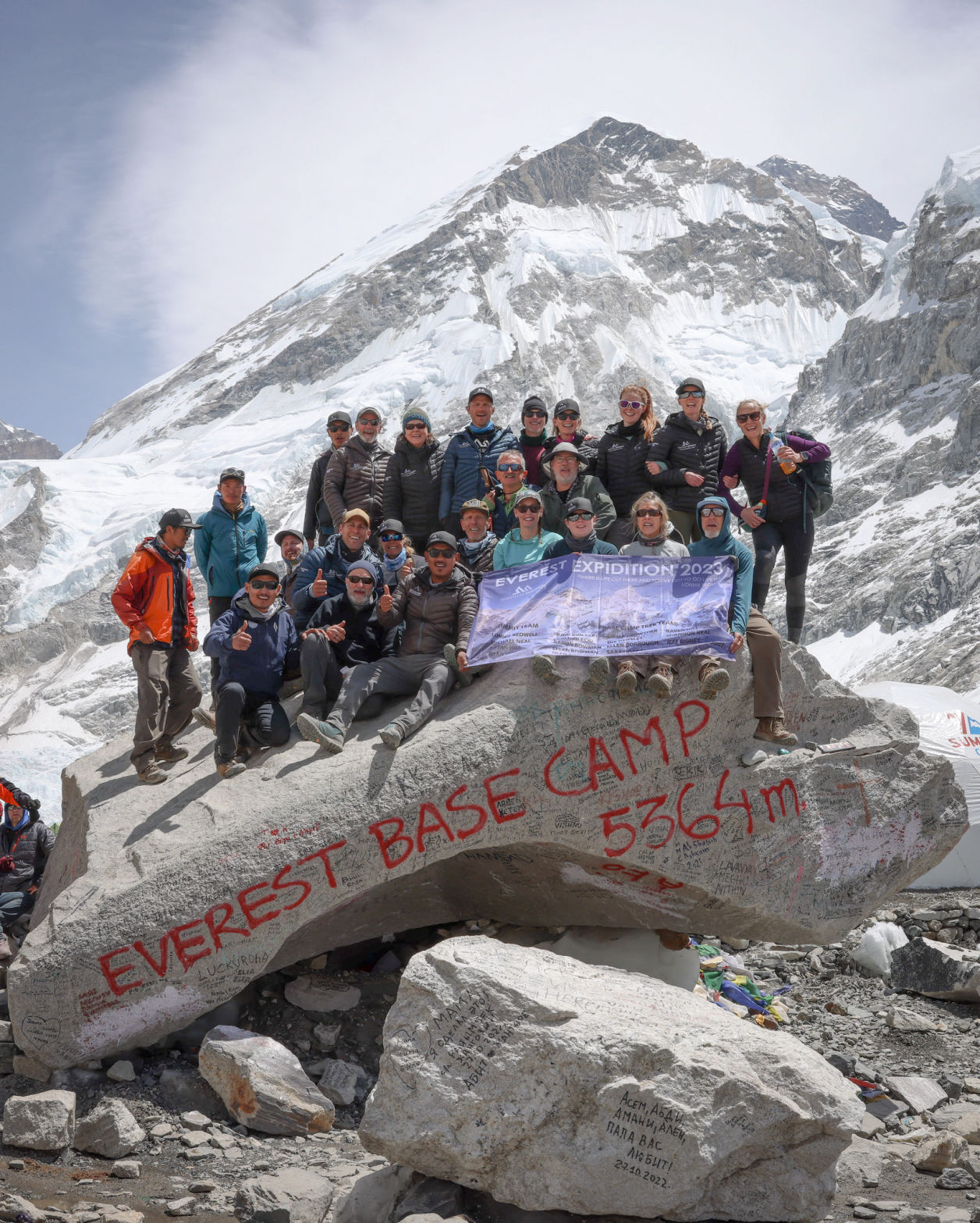
Today was our last trekking day into Everest base camp. It was only a short walk from gorak shep, about 3 hours to camp. We stopped by the famous EBC rock to snap some photos and then moved on into the mountain professionals setup. For perspective, from the time we entered base camp until we reached our specific site it was 45 minutes of walking time. The camp is vast and there are many teams spread across the jagged ice and rocks.
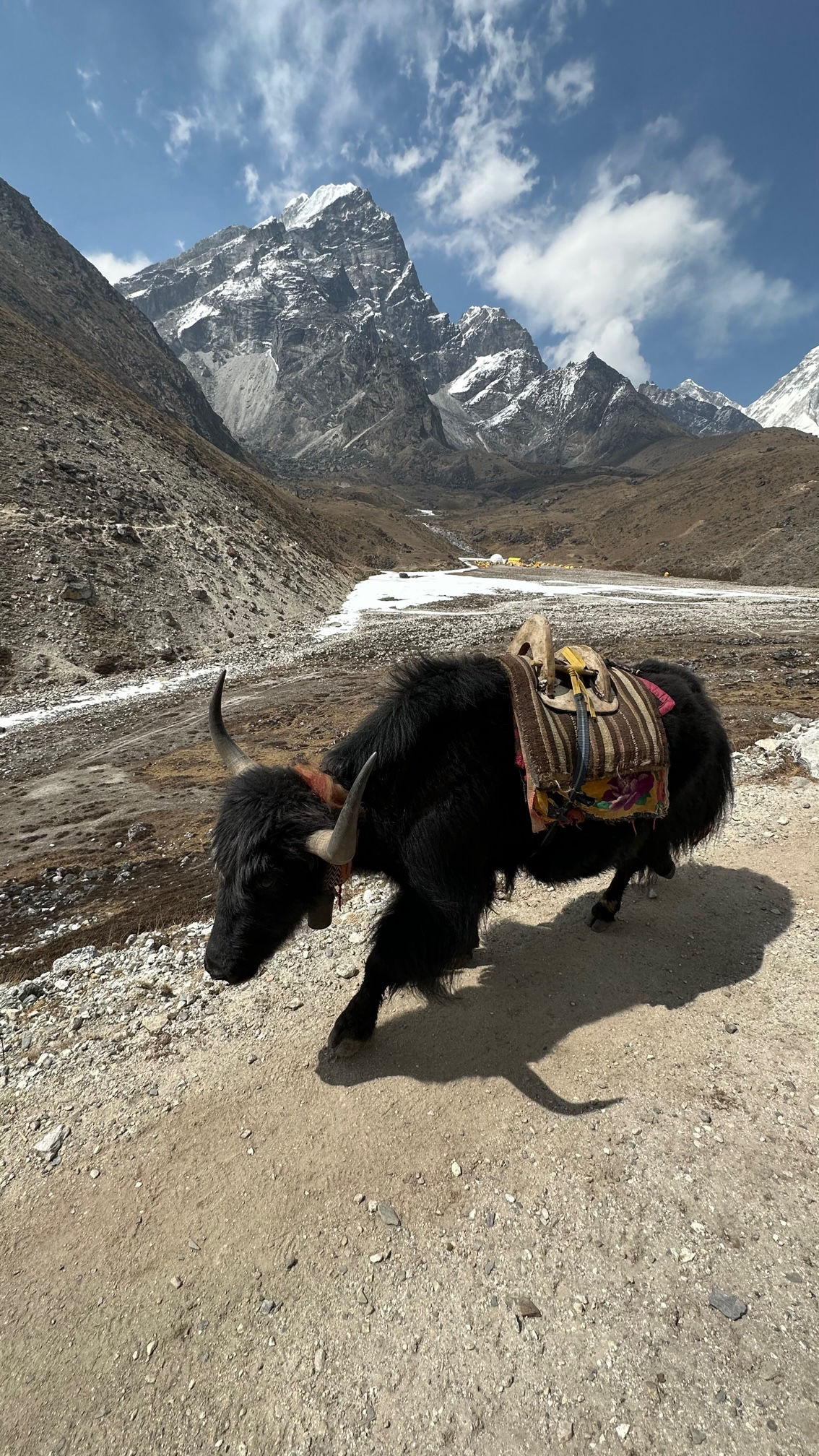
Lobuche to Gorak Shep
We only had a 3 mile walk to get to gorak shep today. We got our first views of Everest base camp further in the valley. Most of the team dropped their bags in the tea house and continued 1,000 feet higher to a view point called kala Patthar which offers great views of Everest.
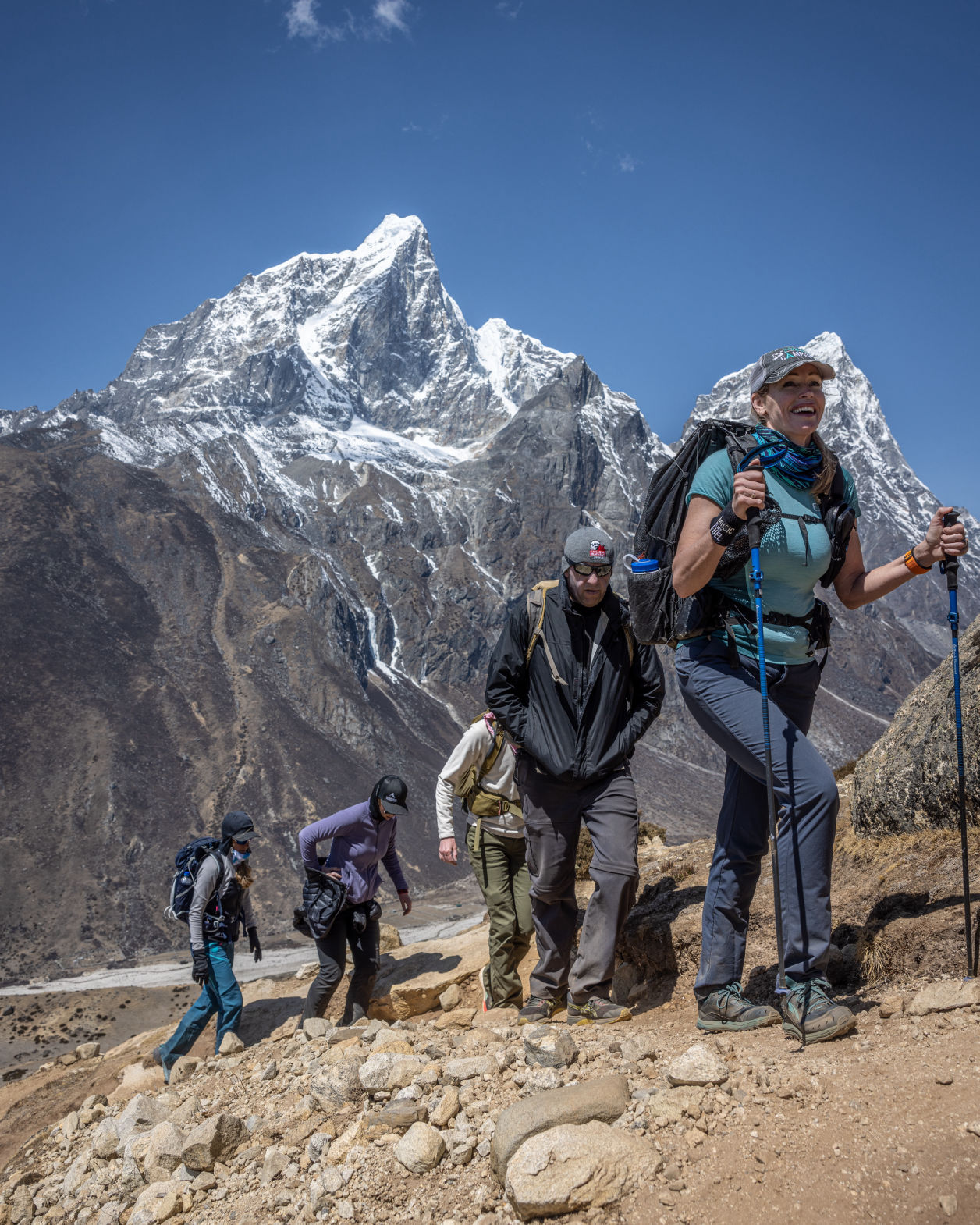
Dingboche to Lobuche
Todays walk was nothing short of breath taking. As we move deeper into the khumbu valley the views get more and more majestic. We passed the climbers memorial and then found ourselves at Lobuche. The nights are getting much colder and the rooms in the tea houses are getting much more basic. We pretty much eat food and then go get into our sleeping bag in the room.
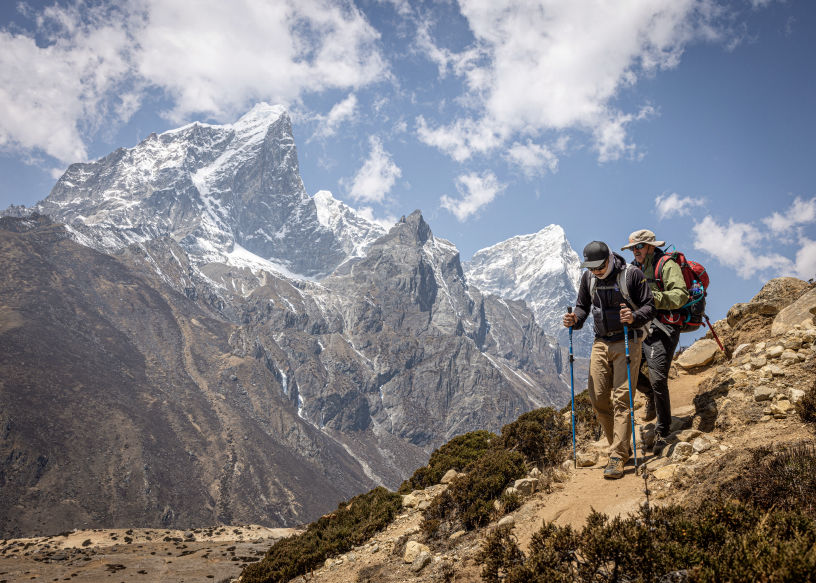
Today the team had a rest day in Dingboche. We took a short hike to touch 15,000 feet and then came back down to hangout at the local coffee/bakery and take some much needed rest. Tomorrow we will keep moving forward towards Everest Base Camp
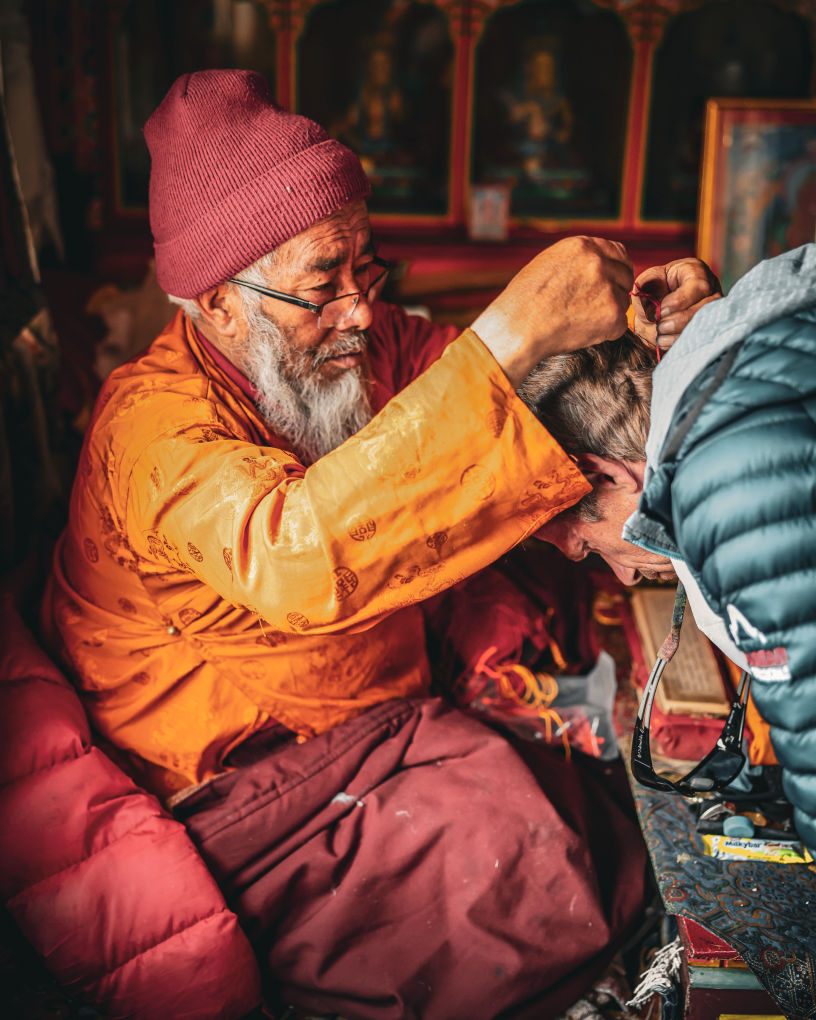
Deboche to Dingboche
Today the team left Deboche and took a 6 mile walk to the town of Dingboche at an elevation of 14,000 feet. We can definitely feel the effects of altitude and are purposefully moving slowly. Along the way to Dingboche we stopped at a monastery were we received a blessing from a lama for safe passage as we move higher into the Khumbu valley. The team is still feeling strong and enjoying the views of the Khumbu valley as we get higher.
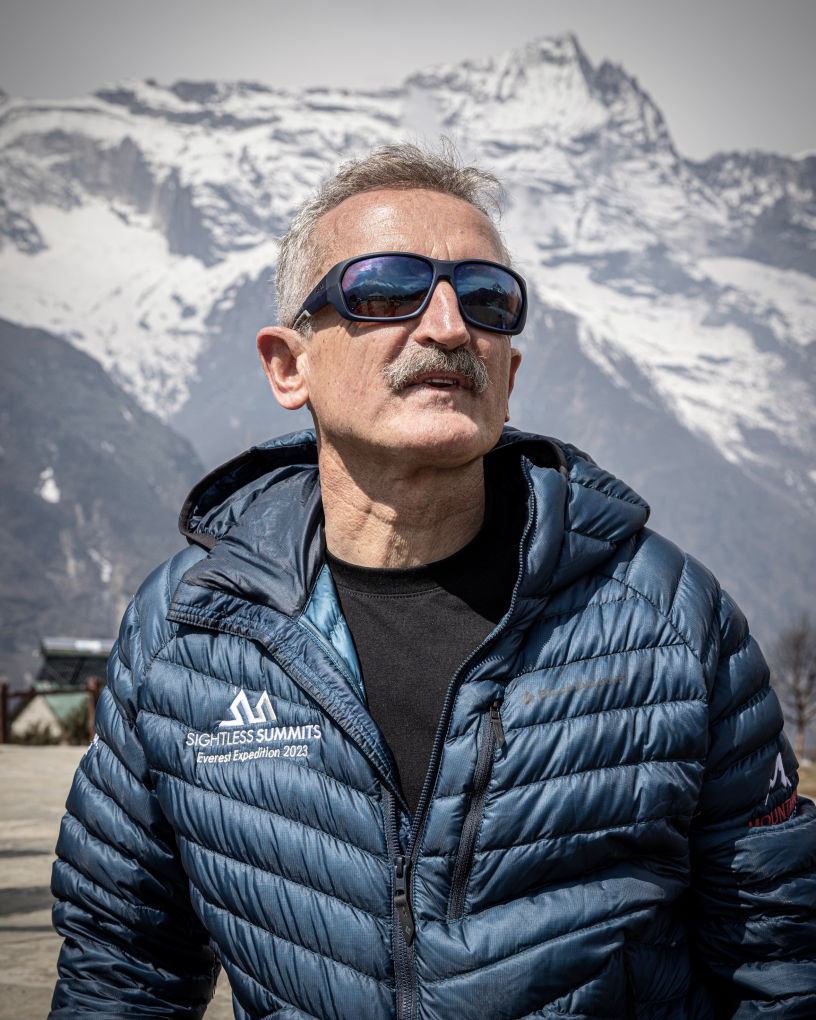
Namche Bazaar to Deboche
After a resting for a day in Namche Bazaar the team is ready to get moving again. Our trek today was one of the more challenging days as we slowly moved higher and had a large hill to overcome at the end of the day. We had wonderful views of Ama Dablam and the Khumbu valley from the start. Later in the day we explored the Tengboche Monastery. The trek ended by descending into Deboche through the thick rhododendron forest that was fortunately blooming!
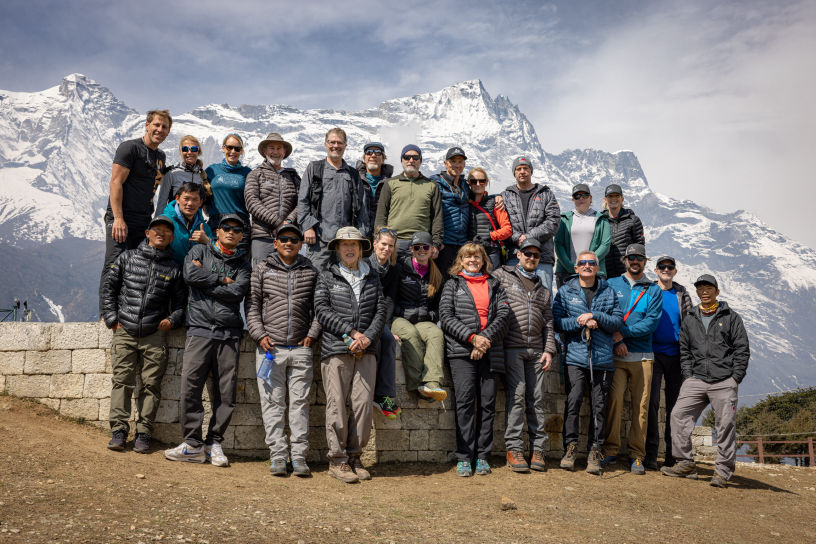
Namche Bazaar Rest Day
Today the team took a rest day in Namche Bazaar as a necessary step to appropriately acclimate. We started the day with a short hike up to our first viewpoint of Mount Everest and the Khumbu Valley. The team then spent a few hours browsing the many shops in Namche and playing board games to pass the time. Tomorrow we will push forward to Deboche.
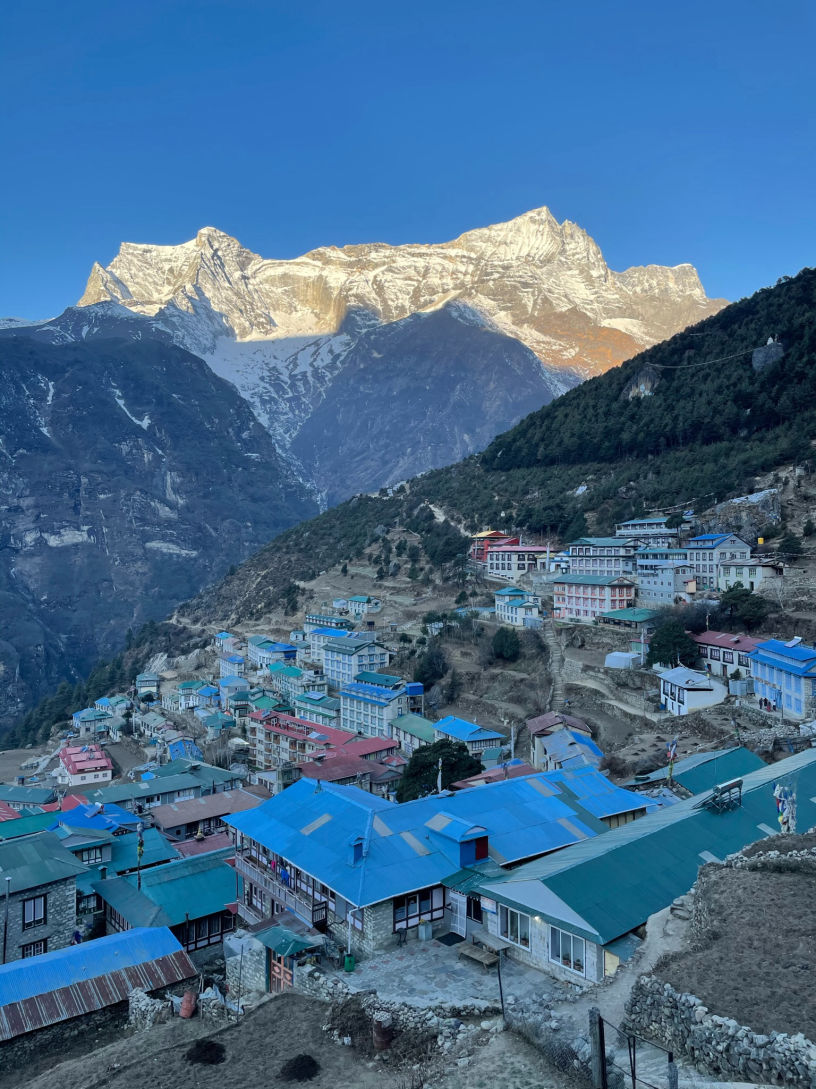
Namche Bazaar
Spirits are high here in Nepal. The team headed to Namche Bazaar which is the last “big” town on the way to Everest Base Camp. From this point resources become more scarce and you are entering into a more wild terrain. To get to Namche the team had a 6.5 mile walk, gaining about 3,000 feet and maxing out around 11,500 feet. The final hill into Namche offers a challenge to even the most experienced mountaineer.

The Team Arrives in Lukla
Today the entire team is united in Lukla, Nepal! The majority of the team woke up at 1:00 am in Kathmandu to catch a 4 hour bus ride to the local airport. By 6:30am the team was in Lukla and eager to hike. After breakfast we took a leisurely 5 mile walk to the 1st tea house in Phakding. It was a great way to get the legs warmed up for the greater trek to Everest Base Camp. “
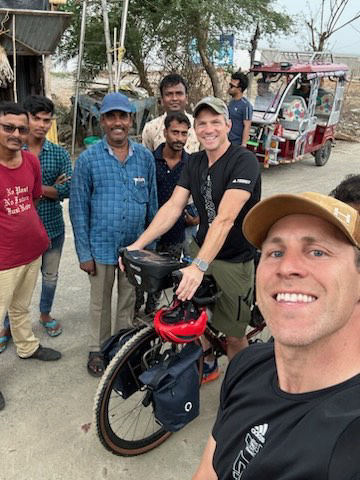
Ride through India is complete!
Michael and Bryan are crushing their Sea to Summit ride. In eight riding days, we’ve ridden 545 miles. It’s been relatively flat with about 7,856 vertical feet of climbing. We had some trouble with Indian immigration that delayed us by a couple of days and added about 100 miles to our ride.
The part of India that we rode through is crazy, like really crazy. Every time we stopped we were mobbed by people who wanted to shake our hands and take selfies. Overall the Indian people were kind and fantastic.
It’s been an incredible trip so far, but our primary focus is to make sure we arrive in Lukla on time and in good health to meet Lonnie Bedwell and the entire Sightless Summits team when they fly in on April 6th!
Michael is interviewed about the Sightless Summits project on KOIN.
https://www.koin.com/local/portland-man-attempting-world-record-everest-lhotse-summits-with-blind-veteran/
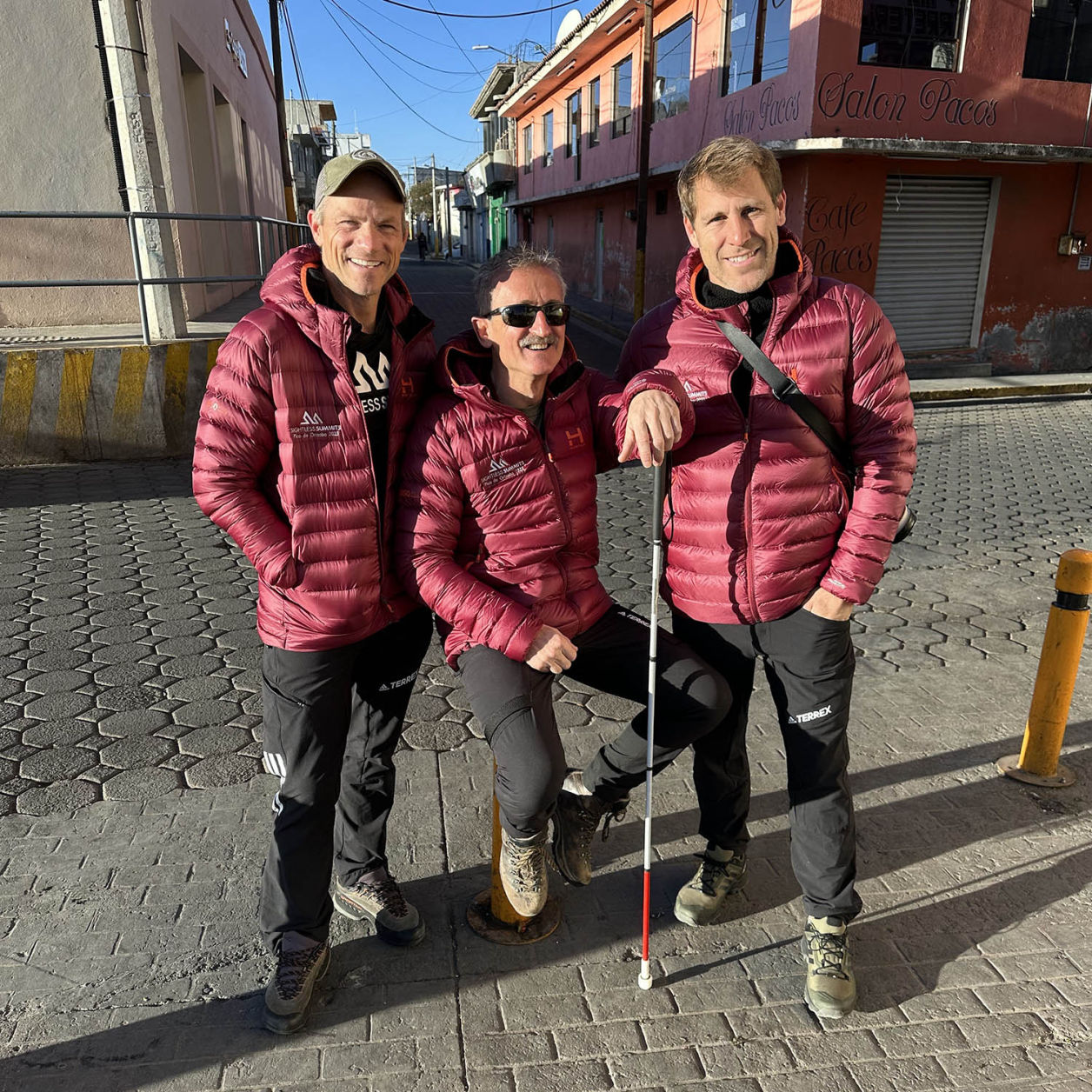
The team is finally heading to one of the most beautiful places on the planet! Michael and Bryan start first on the bicycle ride from the Indian Ocean to the high altitude village of Lukla, Nepal. There we will meet Lonnie Bedwell and the rest of the awesome trekking team! In all it will be 665 miles on bike/foot with over 64,000' of vertical climbing!